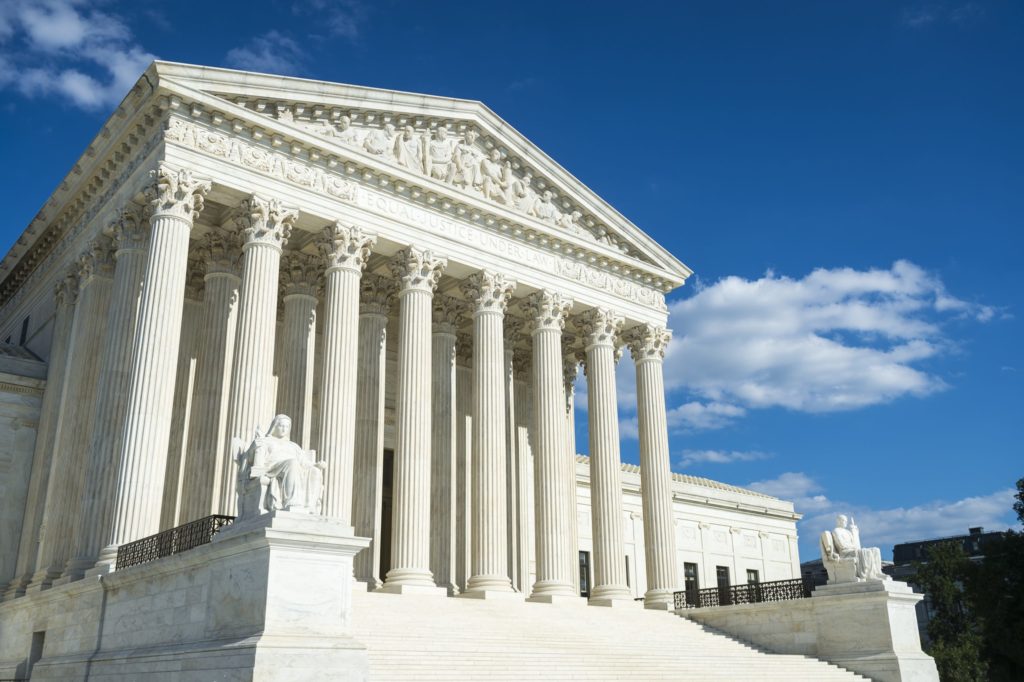White House finalizes CPP, but will it stand?
President Barack Obama yesterday released long-awaited regulations intended to reduce carbon emissions from the power sector by 30 percent by 2030. The stakes are high. Designed under decades-old legislation, the rules aim to achieve carbon reductions by radically expanding the government role in electricity markets and reshaping the markets themselves.
The rules expand government, increase electricity costs and burden power producers and their customers, without making much progress on climate change. When you add them to the administration’s six other major regulatory initiatives on carbon, as well as the carbon reductions achieved by the broad market switch from coal to natural gas, the administration’s climate plan still falls well short of carbon reduction commitments pledged by the president to the international community.
Energy interests and conservatives in Congress have been pushing back against these regulations since they first were proposed last June. Most recently, 26 members of the House and Senate have asked the White House’s regulations chief to be sure the rules will not require states to comply before the inevitable legal challenges can be resolved by the courts.
It’s an important point. This tension between compliance and litigation timelines is why Murray Energy and 12 states challenged the regulations before they were finalized (Murray Energy Corp. v. Environmental Protection Agency). Dismissed in June by the D.C. Circuit Court, the challenge was designed to settle whether the regulations were legal before states had to grapple with carbon reductions.
We have reason to be concerned. In a separate case, Michigan v. EPA, the Supreme Court in June remanded a different EPA rule to the lower court, stating that the agency had inappropriately failed to consider costs in deciding to issue the rule.
The rule that troubled the court was “Utility MACT,” which established technology standards for reducing hazardous pollutant emissions like mercury from power facilities. EPA predicted the rule would cost the power sector and its customers $9.6 billion per year. The resulting benefits from reducing hazardous pollutant emissions amount to a whopping $0.5 to $6 million.
As Justice Antonin Scalia wrote in the majority opinion, “one would not say that it is even rational, never mind ‘appropriate,’ to impose billions of dollars in economic costs in return for a few dollars in health or environmental benefits.” Counting reductions in other pollutants, the EPA estimates so-called “co-benefits” of the rule to be as much as $89 billion, which ultimately helped the rule survive a cost-benefit test.
The legitimacy of implementing a regulation justified only by its ancillary benefits certainly should be questioned. If there are so many achievable benefits left on the table from reducing other types of emissions, aren’t there probably cheaper ways to achieve those reductions?
But an even greater concern is that the Supreme Court didn’t make its decision on Utility MACT until June 2015; the deadline for achieving reductions was April 2015. The EPA crafted a rule that ultimately was unable to survive a legal challenge, but still induced compliance and passed nearly $10 billion in costs along to taxpayers.
Tight compliance timelines are a clear point of difficulty for power providers. Regulations get baked into years-long capital planning and investment processes for generation facilities. That means operators started making decisions about the April 2015 compliance deadline as soon as the regulation was finalized.
Even those facilities that were given an additional year to comply with the Utility MACT regulations already have made their investments and scheduled outages to install the expensive scrubber technology or switch to natural gas. The decision in Michigan v. EPA, at most, affects only about 22 plants, or 1 percent of the power supply; the rest either have already complied with the rule or have closed.
The Michigan ruling clearly vindicates efforts to resist the Clean Power Plan. When Senate Majority Leader Mitch McConnell, R-Ky., tells states not to comply with the regulations until the Supreme Court has heard the inevitable challenge, he is erring on the side of caution. The Ratepayer Protection Act, introduced by Rep. Ed Whitfield, R-Ky., is a backstop against forcing compliance until we have certainty over whether the regulation will stand. The Clean Power Plan, by design, will overhaul electric generation, dispatch systems and state-level energy laws. If the court finds yet again the administration has inappropriately interpreted a law to fit its regulatory agenda, those efforts will be for naught.
The consistent conservative opposition to the White House’s unrelenting regulatory pressure on the fossil-energy industry is an important counterpoint to an ambitious environmental agenda poorly founded in the law. We have achieved tremendous improvements in environmental quality and expanded economic opportunity while sticking to the letter of the law. If anything, Michigan should remind regulators that they compromise both their goals and industry confidence when straying from congressional intent.
That’s what makes the recent letter from congressional conservatives so important. Supported by, among many others, Senate Environment and Public Works Chairman Jim Inhofe and House Energy and Commerce Chairman Fred Upton, it clearly declares Congress’ intent to eliminate damaging and expensive executive branch overreach. Especially in the wake of the Michigan decision, the EPA and the White House should tread carefully on their latest regulatory effort.







